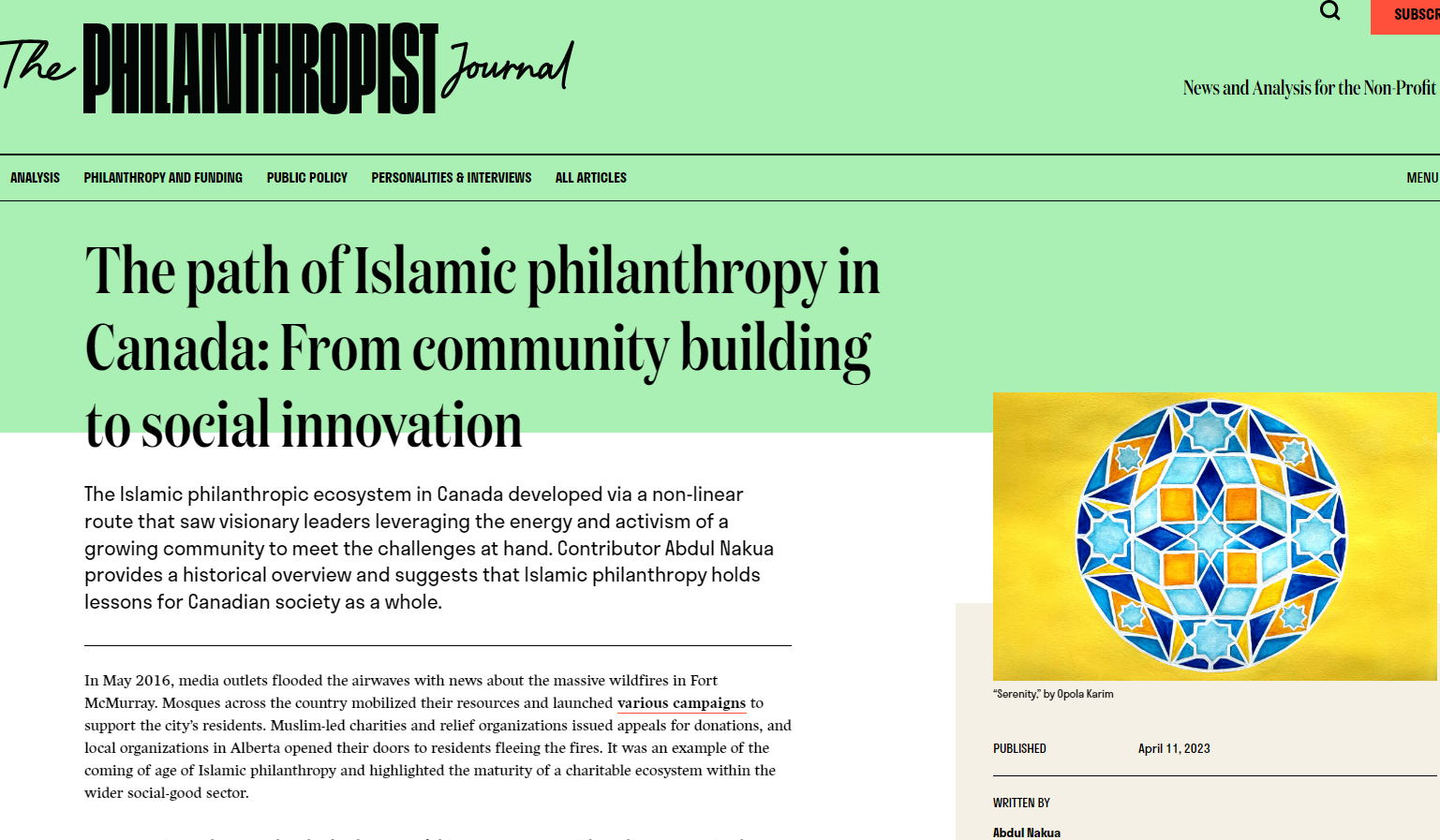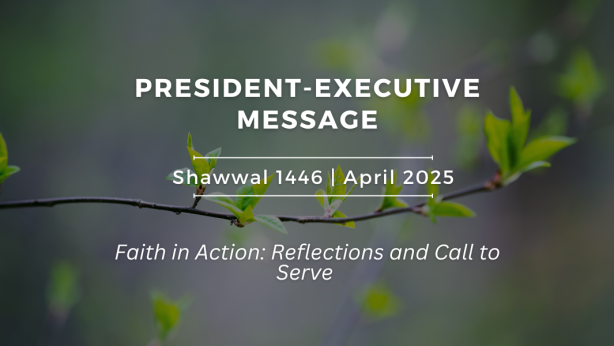The path of Islamic philanthropy in Canada: From community building to social innovation

April 11, 2023
The Islamic philanthropic ecosystem in Canada developed via a non-linear route that saw visionary leaders leveraging the energy and activism of a growing community to meet the challenges at hand. Contributor Abdul Nakua provides a historical overview and suggests that Islamic philanthropy holds lessons for Canadian society as a whole.
In May 2016, media outlets flooded the airwaves with news about the massive wildfires in Fort McMurray. Mosques across the country mobilized their resources and launched various campaigns to support the city’s residents. Muslim-led charities and relief organizations issued appeals for donations, and local organizations in Alberta opened their doors to residents fleeing the fires. It was an example of the coming of age of Islamic philanthropy and highlighted the maturity of a charitable ecosystem within the wider social-good sector.
However, it is worth noting that the development of this ecosystem was neither a linear nor a simple trajectory. It took an arduous route, growing by an iterative process that mobilized the energy and activism of a growing community.
Its development mirrors that of the Muslim community. By 1931, Canada’s Muslim population was 645 people. That number grew to approximately 33,370 by 1970. As the community started to cluster in major cities, their growing needs became more apparent, and there was a pressing need to address them. But these young communities and their leaders faced tremendous challenges. They were scattered across a huge geographical span with meagre financial resources and a small pool of potential donors, and they lacked organizational capacity. With no hierarchical structure mandated by the faith, the strategy for community development aligned along two tracks: meeting immediate local needs and building organizational infrastructure to support the local work and create cohesion within the many constituent parts of the community.
The lack of hierarchy necessitated a strong mobilization and organization of the community. Early efforts in building organizational capacity focused on forming strong ties between Muslims in the US and Canada, organizationally, socially, and culturally. An influx of students pursuing their studies at universities across Canada and US provided the impetus for this community-building endeavour. Driven by a vision that mirrored the ideas of the Islamic revival in their countries of origin, they established the Muslim Students Association (MSA) in 1963, serving both the United States and Canada. Out of this sprang up other organizations, such as the Islamic Circle of North America and the Muslim Arab Youth Association. The Islamic Society of North America (ISNA) was founded in 1981 as a direct outcome of strategic deliberations started in 1975 by the leadership of MSA National. Profession organizations such as the Association of Muslim Scientists and Engineers, the Association of Muslim Social Scientists, and the Islamic Medical Association of North America were also founded by the same cohort of Muslim students in the 1960s and early 1970s. The Council of Muslim Communities of Canada was created in 1973. Some of these organizations remained active and grew in different paths, while others ceased to exist.
Read the full article: The path of Islamic philanthropy in Canada: From community building to social innovation – The Philanthropist Journal

Abdul Nakua is a MAC Executive.

The Philanthropist Journal is an online journal for those interested and engaged in the charitable and non-profit sector in Canada.


